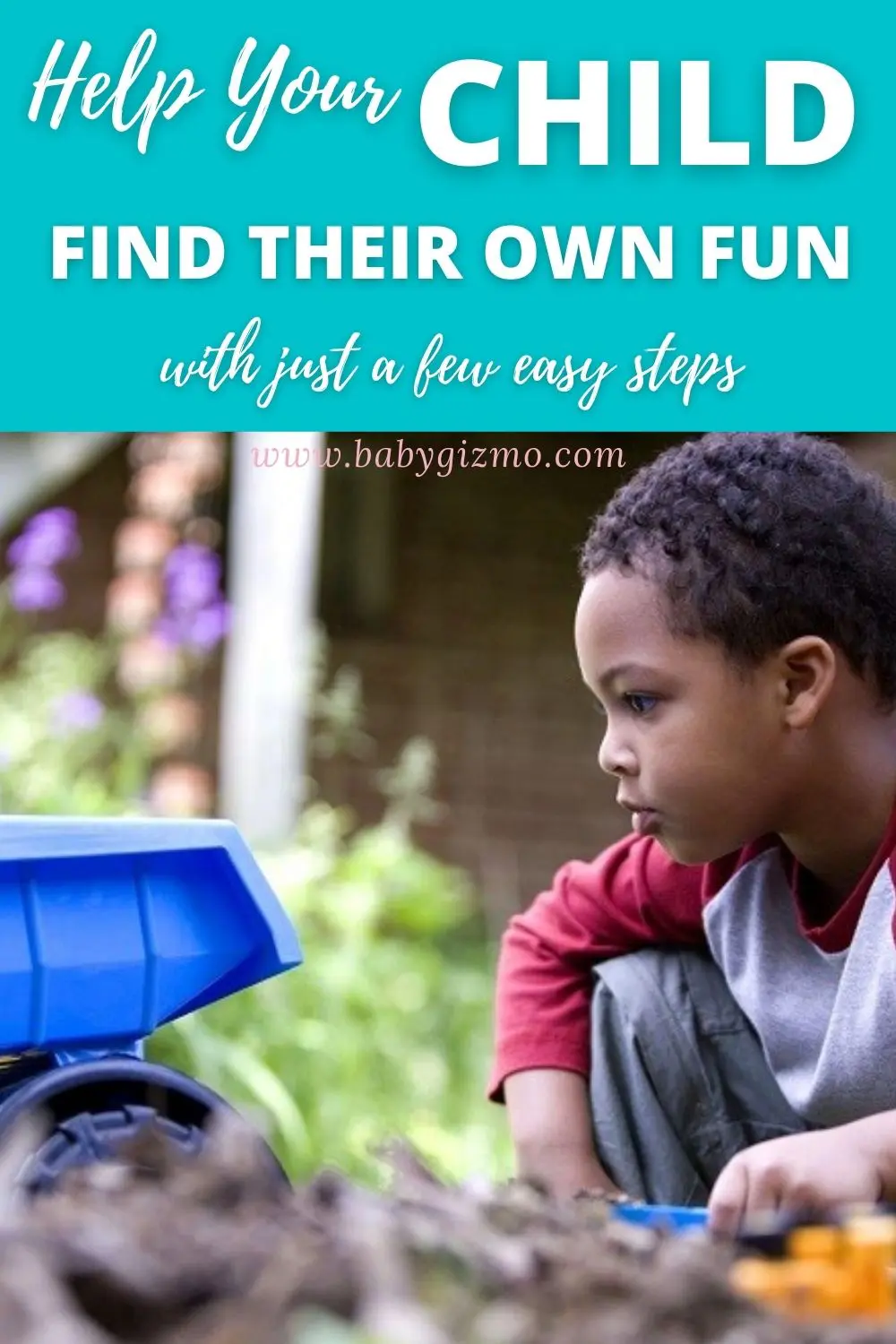A friend of mine recently announced she and her husband are expecting their first baby. She asked for advice from her friends with children about how to deal with being a parent and being needed and “on” 24/7 when you’re an introvert who needs alone time to function. [bounces up and down in seat and waves hand wildly] Dude. I am so there! So let me share some of the advice I have for helping your child find their own fun so that you can find… whatever it is that you need find on your own.

Oh. Safety. “Alone time” is relative. Depending on your child’s age and temperament, the level of supervision they need to stay safe may not allow for actual time where you are the only person in a given space at a given time. In that case, these tips can help you mutually ignore each other in a way that is pleasant for everyone involved.
So, on to the advice.
Read Ladybug Girl by David Soman and Jacky Davis together
I recommend this book to everyone—mostly because it gave my husband and I the best words to explain to the kid what we want her to do. In the book, Lulu (I’m guessing she’s four or five) spends a day entertaining herself. The concrete examples of ways to have fun alone are nice, but what has been so incredibly useful for my family was this quote: “Papa and I have work to do around the house. You’ll have to figure out your own fun time, okay?”
For whatever reason, that really resonated and we picked up the phrase. We remembered it imperfectly, so in our house it’s “find your own fun,” but those are our magic words for “I’m busy. Lemme alone.” And what’s better is that it’s not usually the parent that says it! I’ll say, “Okay, today, I need to vacuum the house—“ and my daughter will interrupt, “—I need to find my own fun.” Love it.
Start early and go slowly
Once your child is safely able to be alone for a moment or two—say while you get a drink or send a quick email—begin to encourage them to spend that time on their own. If you’re working to establish independent play later in your child’s development, the same idea still applies, in that you’re probably only going to get a couple of minutes at a time when you start out.
If you’ve got work to do, give them work to do
Last week, I started staining our balcony while my daughter napped. Apparently, she woke up when my husband came home, but I had no idea because he changed out of his work clothes and came out to help me. I happened to glance in the house and see the kid in a princess dress with a paint brush and bucket in hand “painting” the kitchen walls while having a snack.
The next day while I was vacuuming, she grabbed her duster and started dusting the stair handrails telling me about all the work she had to do that day. That was all kid-initiated. (PS, give your kid real cleaning tools. Mine has a Swiffer shortened to her height, a duster, and a hand broom. If they’re going to play cleaning, they may as well actually be helping.)
Keep things accessible
As much as we want to keep things tidy—especially if we’re not lucky enough to have a playroom to contain the mess—tucking everything away in pretty boxes and containers can be problematic. If a child can’t see what’s there to play with, they’re not going to use it.
Clear bins (or no bins and just open shelves) are best. If you simply must store things, try to at least go for open top bins or boxes, storage containers with clear fronts, and/or use labels with pictures and words to indicate the containers’ contents. (This helps with clean-up, too.) We’ve found that we’re able to do the same thing with snacks. There’s a shelf in the pantry at my daughter’s height that has things like fruit leather, pretzels, crackers, and raisins that she can grab on her own after asking for a snack. Fruit and cheese are in a drawer at the bottom of the fridge where she can reach those, too. My kitchen is self-service, people.
Don’t butt in
If your child is happily engaged playing by themselves at a time when you really don’t need them to be, let them go! You can comment on what you see and narrate the play (“You put the green block on top of the red block.”), but you don’t even have to do that. The kinds of discoveries children can make during self-directed play are amazing!
Letting your child initiate independent play when you don’t “need” them to gives them practice so they know what to do when you do need that time to yourself. If you get bored watching—hey, it happens; no judgement—grab a coloring book or something to read and just hang out in the same space. You’re helping them practice independent play in a no-pressure moment where they’re learning it can be fun to, well, find their own fun.
As my daughter has grown, I’ve been very honest with her about how Momma needs some alone time/not to talk right now/get something done, and we’ve found ways that we can be together without actually interacting that work for us. However, I’m not chalking that arrangement up to wicked good parenting skills as much as I am thanking my lucky stars that I got a good match for me and found some tips that work for my family. Be sure to share your independent-play tips in the comments. And for more ideas on making you-time, check out my post on working from home with young children.
